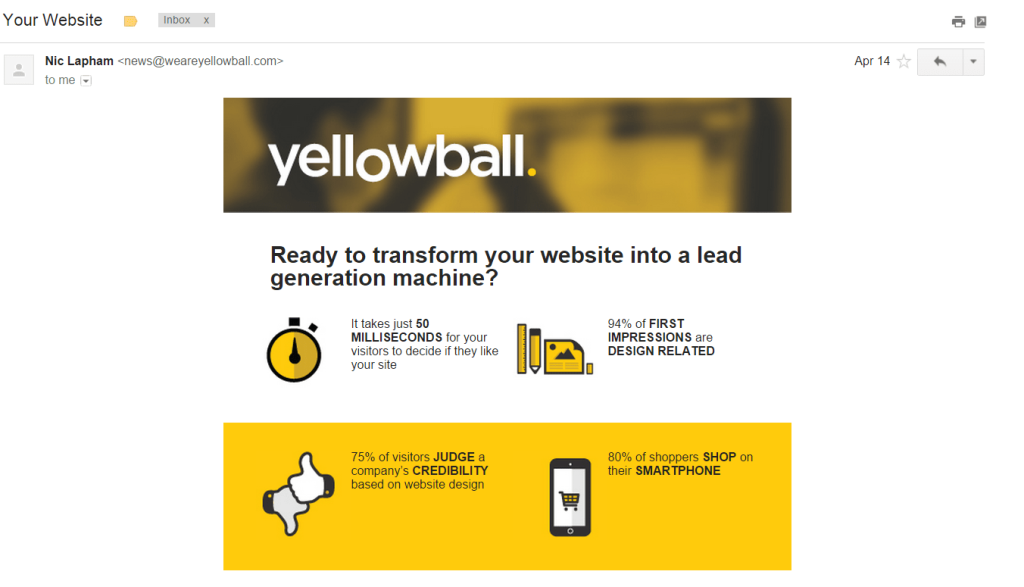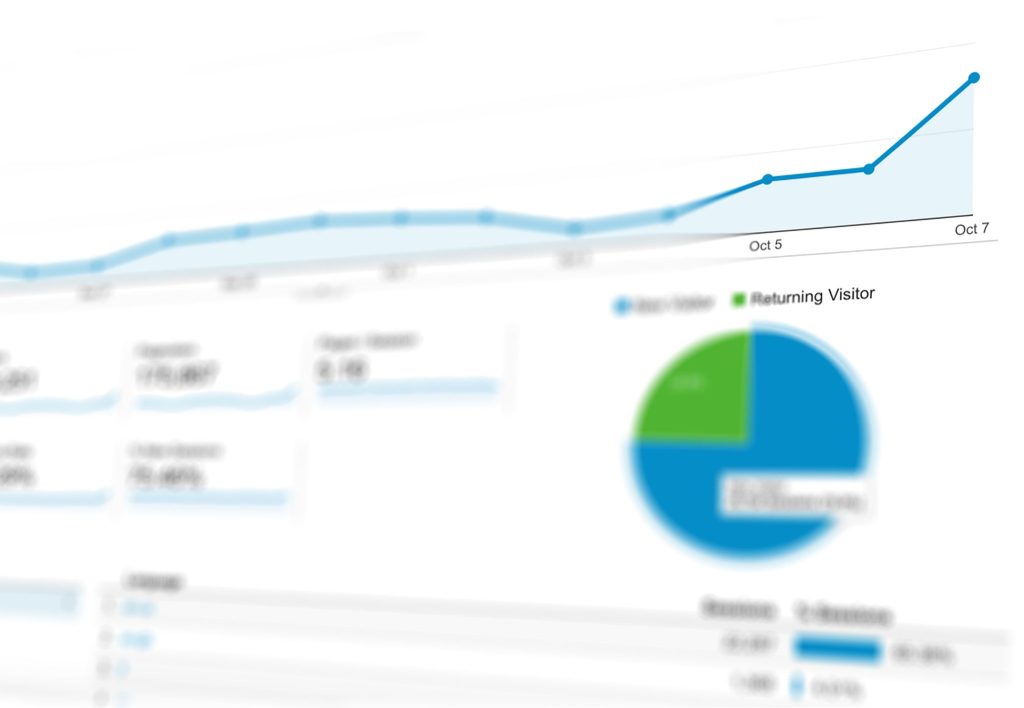At Yellowball we have seen direct results from the email marketing campaigns that we have managed for ourselves and for our clients. Email still represents a platform on which we spend a considerable amount of time, especially during working hours. Combine this with smartphones and email marketing can be an incredibly effective strategy. Here are our top 6 tips to running a successful email marketing campaign:
- Optimise the subject line
- Personalise subject lines or introductions
- Implement high-quality design
- Include call to actions
- Follow up
- Build a community
1. Optimise the subject line
Let’s face it, opening emails that are obviously sent out en masse is not particularly high on our daily ‘to do’ list. The subject line is the gatekeeper in the world of email marketing. Your incredible content and call to actions are completely worthless if the recipient does not even open the email. This is your chance to intrigue that person who wants any excuse to procrastinate at work, your chance to get them to think “hmmmm, don’t usually read these but that sounds suitably enticing”.
There are a million and one different tactics to use: personalisation with names, re: lines, questions, statistics, and more. In the end, treat it as click bait. Without that click your email is worth diddly squat. Transform your subject line from the Cerberus esque nightclub bouncer that puts people off entering, to a charming front of house at a high class restaurant that entices people in.
2. Personalise subject lines or introductions
Personalising subject lines or introductions is a classic technique to attempt to make an e-shot relevant to the recipient, but in the days of technologically advanced databases and CRMs, it is lazy. Segmentation of your data is key to making sure that the right content is marketed to the right key. Remember that if content is king, then context is God.
E-commerce sites have an easy route into the, sometimes eerie, ability to provide relevant content, segment your data and use data from other shoppers to figure out what their next purchase might be. The likelihood is that if 80% of shoppers that buy that particular pair of trousers then go on to buy from that range of t-shirts then a well placed email offering a discount on those t-shirts will result in increased sales. Yes it is an exaggerated example and requires past data – but you get the point. Knowledge is power, so gather it and use it.
3. Implement high-quality design
Our next blog post “why ‘don’t judge a book by its cover’ is misleading” is all about why aesthetics are important. In short, they are. Especially when you have limited time to capture attentions…a prime example of this are marketing emails.
A well designed, visually stunning email will hold the user for longer and provide a better platform through which you can deliver your desired message.
4. Include Call to Actions
The vast majority of businesses embark upon email marketing campaigns with the view of producing tangible ROI through increased sales. As such, the email should be encouraging readers to move further down the ‘sales funnel’, i.e moving closer to making a purchasing decision. Whilst it is encouraging that a recipient has opened or even read your email, it still leaves ambiguity in regards to their status on your product or service.
Call to Actions
The email should be channelling the recipient through your sales process and increasing their engagement with your brand. A key way to channel the reader is through call to actions (CTA’s), recipients need to be encouraged to visit your website or read more about a certain subject – of course the information has been supplied by your business! Not only do these CTA’s provide data to prioritise your follow up list (see no. 5) but also create the opportunity for you to further add value for the user.
Finally, your website is highly likely to display more information about your products or services than an e-shot. Therefore, after the user has shown an interest, they will be channelled by CTA’s to a second point of engagement (your website) where they’ll have an opportunity to purchase or for the website to cross-sell. Without these call to actions the email may simply represent some interesting information, which after consuming said information the reader goes about the rest of their day!
5. Follow Up
Proactive or interruptive marketing (i.e emailing or calling people) has become very unfashionable of late. Inbound marketing is all the rage, enticing people to come to you rather than the other way around. As digital marketers we understand and witness the enormous benefit of inbound marketing, but that does not mean that picking up the phone should become obsolete. Email analytics will show you which individuals have opened and read the email, it will also show who has clicked on a call to action. Those that have clicked should be contacted.
Imagine the scenario: person is looking for a particular product, receives email, likes the look of it, even reads more, wants to get in contact BUT then someone at works asks for something. They go back to their day job and although they want your product or service and were intending on calling, it is too low down on their list and in a couple of days (if not hours) it will be forgotten.
Carpe diem. Where ever possible, follow up. It might be that calling through a list is either not a viable solution due to volume or too ‘in your face’ for your brand. In this scenario consider other ways to follow up, re-marketing via Google’s display network (GDN) or boosted posts through social can be very effective methods of re engaging email recipients.
6. Build a community
This is the dream scenario and easier said than done. It also requires perseverance and a regular drip of high quality information but get it right and the dividends are considerable. Do you feel a bit like you are intruding on people by sending out an e-shot?
Well that is because it is interruptive marketing, you are proactively asking someone to look at your content. Believe it or not with a steady stream of intriguing and valuable content you can build a community that will welcome your emails with open arms, giving you the opportunity to embed your brand into their psyche.
Consistent Content
This is the holy grail. Make sure that your content is consistently of value and build your community – then keep them up to date through email. An engaged community will welcome update emails with open arms and gladly click through to your new post and website, giving you further opportunity and time to convert them into a customer. Simple, right?
Yellowball is a web design agency based in London. Ready to see your vision come to life? Partner with Yellowball and experience web design that truly elevates your digital presence.
Read more: How to create a customer data strategy









